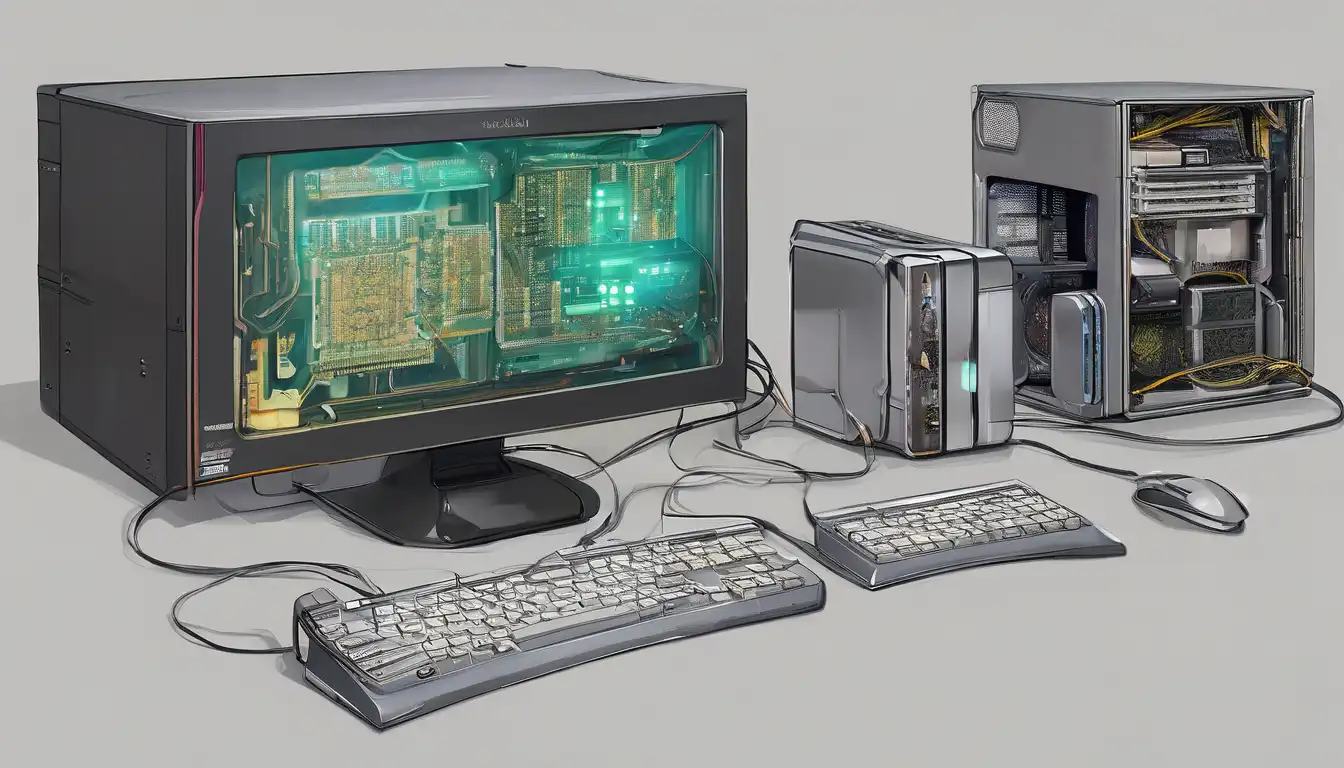Revolutionary Advances in Computer Hardware Technology
The landscape of computer hardware technology is undergoing unprecedented transformation, with innovations emerging at an accelerated pace. From quantum computing breakthroughs to AI-optimized processors, the latest developments are reshaping how we interact with technology. These advancements promise not only enhanced performance but also greater energy efficiency and revolutionary capabilities that were once confined to science fiction.
Next-Generation Processors and Computing Architecture
The processor market has witnessed remarkable evolution with the introduction of 3D stacking technology and chiplet designs. Major manufacturers like Intel, AMD, and ARM are pushing boundaries with processors that feature:
- Advanced 5nm and 3nm manufacturing processes
- Heterogeneous computing architectures
- Integrated AI acceleration units
- Enhanced security features at hardware level
These innovations deliver significant performance improvements while reducing power consumption. The shift toward specialized processing units for specific tasks represents a fundamental change in computing philosophy, moving away from one-size-fits-all solutions.
Memory Technology Breakthroughs
Memory technology has seen revolutionary changes with the advent of DDR5 RAM and persistent memory solutions. The latest memory innovations include:
- DDR5 memory with speeds exceeding 6400MT/s
- 3D XPoint technology for persistent memory
- High-bandwidth memory (HBM) integration
- Advanced caching architectures
These developments not only boost system performance but also enable new computing paradigms. The integration of memory and storage technologies blurs traditional boundaries, creating more efficient data processing pipelines.
Storage Revolution: Beyond Traditional SSDs
Storage technology has progressed beyond conventional solid-state drives with the emergence of PCIe 5.0 NVMe drives and computational storage. Key innovations include:
- PCIe 5.0 SSDs with read speeds exceeding 14GB/s
- QLC and PLC NAND flash technology
- Computational storage drives with integrated processors
- NVMe-oF (NVMe over Fabrics) for enterprise applications
These advancements dramatically reduce data access latency while increasing storage density. The move toward computational storage represents a fundamental shift, bringing processing power closer to data storage locations.
Graphics and Display Technology Evolution
The graphics processing unit (GPU) market continues to innovate with real-time ray tracing, AI-enhanced rendering, and advanced display technologies. Recent developments feature:
- Hardware-accelerated ray tracing cores
- AI-powered upscaling technologies like DLSS and FSR
- 8K display support and high refresh rate capabilities
- Advanced cooling solutions for sustained performance
These innovations enable photorealistic graphics in real-time applications while supporting emerging technologies like virtual reality and augmented reality. The integration of AI capabilities directly into graphics hardware marks a significant milestone in visual computing.
Quantum Computing and Neuromorphic Hardware
Beyond traditional computing architectures, quantum computing and neuromorphic hardware represent the frontier of computer technology. These emerging fields include:
- Superconducting quantum processors with increasing qubit counts
- Photonic quantum computing developments
- Neuromorphic chips mimicking biological neural networks
- Quantum-classical hybrid computing systems
While still in early stages, these technologies promise to solve problems intractable for classical computers. The progress in quantum error correction and stability brings practical quantum computing closer to reality.
Connectivity and Interface Innovations
Modern hardware interfaces have evolved to support unprecedented data transfer rates and connectivity options. The latest standards include:
- USB4 with 40Gbps transfer speeds
- Thunderbolt 4 for universal connectivity
- Wi-Fi 6E and upcoming Wi-Fi 7 standards
- PCIe 6.0 with 64GT/s transfer rates
These advancements ensure that data bottlenecks are minimized across all system components. The convergence of various interface standards simplifies connectivity while maintaining backward compatibility.
Sustainability and Energy Efficiency
Hardware manufacturers are increasingly focusing on sustainability and energy efficiency. Recent developments include:
- Low-power processor architectures
- Advanced power management technologies
- Recyclable and sustainable material usage
- Energy-efficient cooling solutions
These initiatives address growing environmental concerns while maintaining performance standards. The industry's commitment to reducing carbon footprint represents a significant shift in manufacturing priorities.
Future Outlook and Emerging Trends
The future of computer hardware technology points toward several exciting directions. Key trends to watch include:
- Integration of AI capabilities across all hardware components
- Development of photonic computing systems
- Advancements in biocomputing and DNA storage
- Continued miniaturization and performance scaling
These developments will likely transform computing as we know it, enabling new applications and capabilities. The convergence of different technological domains promises unprecedented innovation in the coming years.
The rapid pace of innovation in computer hardware technology ensures that users can expect continuous improvements in performance, efficiency, and capabilities. As these technologies mature and become more accessible, they will undoubtedly shape the future of computing across all sectors, from personal computing to enterprise applications and scientific research.
